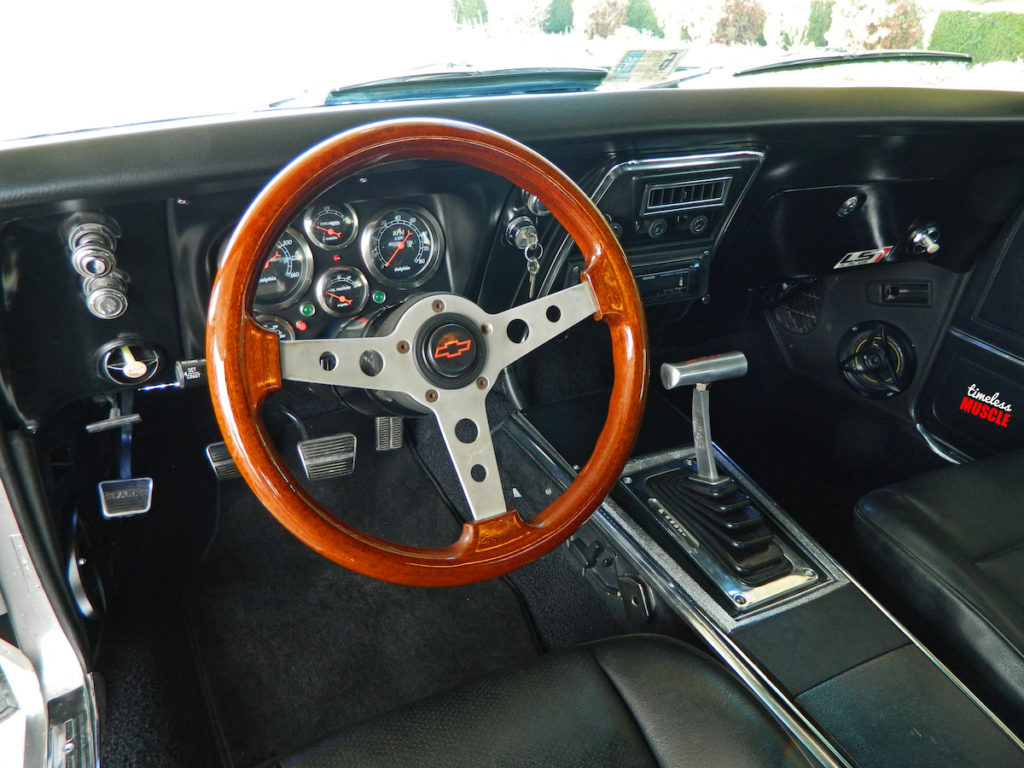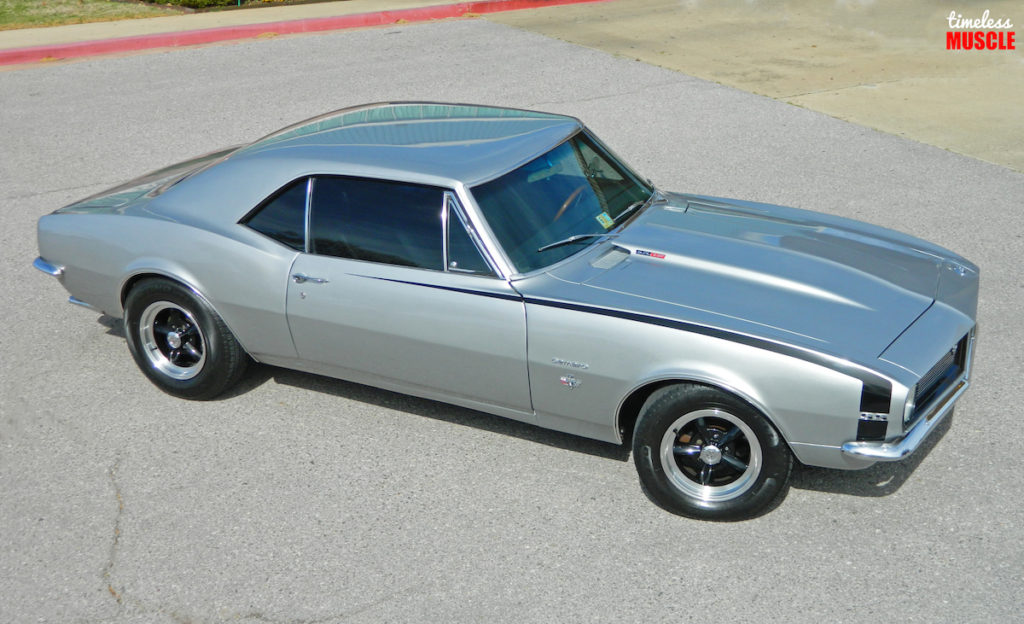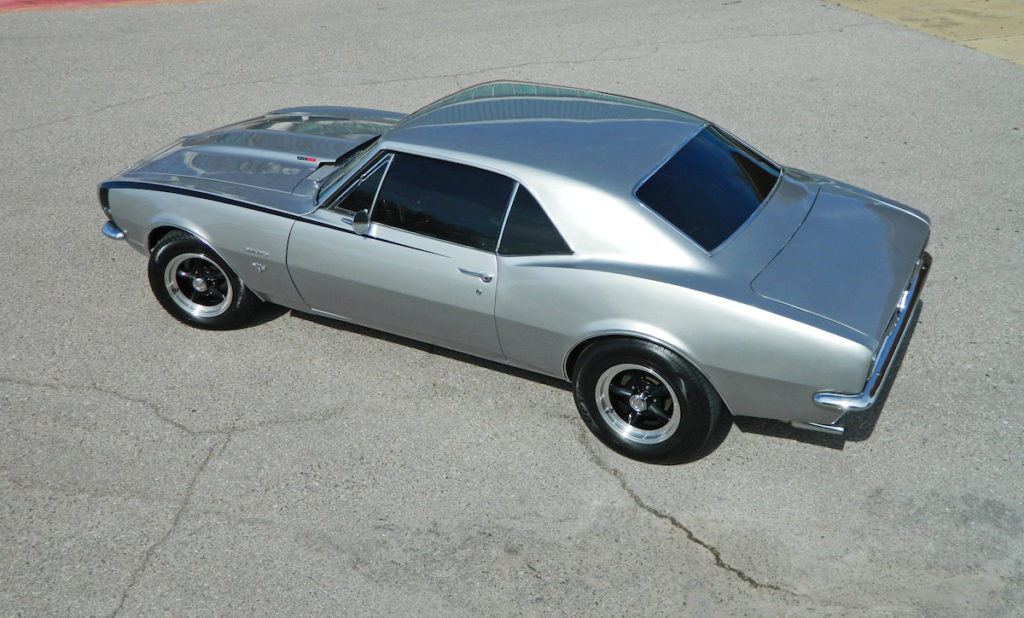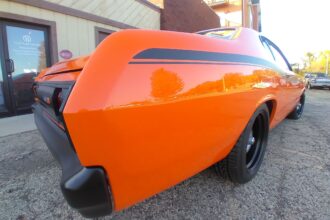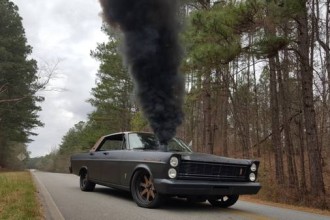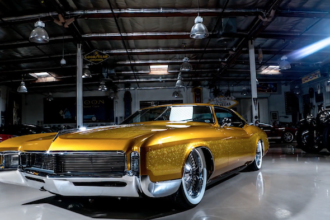photos by: the author
This ’67 Camaro is a Family Affair!
For some reading the title, I’m sure you’re thinking, “a 2+2 coupe is not really a ‘family’ car.” True, it might be less spacious than some offerings boasting four doors, however Stuart Tempalski’s LS1-powered 1967 Camaro isn’t that type of family car. His Camaro is the type that started as his father’s before it became his. “I started this car to finish for my dad. I told him that I wanted to build it so he would have a nice cruising car to run and show off.”
In late 2012 the Camaro was brought to Stuart’s house in Virginia. Putting in what little extra time was available while being an active duty military serviceman, Stuart completed it by the fall of 2014. “My father was down the weekend I got her back from paint. He always told me “It will never get done, it was too far gone.” He couldn’t believe his eyes. She was gorgeous!” At this time the Camaro had a 350C.I. Small Block Chevrolet engine, paired to a Muncie M20 4-speed. “I threw the keys to my dad and said “It’s all yours.” Within 30-seconds, he threw them back at me and said, “It’s too good and I want you to have it.” From there, that’s when I really built her.”
Soon after taking possession of his newly restored 1967 Camaro, Stuart started researching LS swaps online. His goal was to make the Camaro a “Turn-key, Go!” affair, while keeping to a budget, and without cutting corners. Stuart started with a LS1 from a 2002 Camaro Z28 donor car. From there he completely rebuilt the engine to stock specifications. The factory LS1 is no slouch in stock form. It comes with an aluminum block displacing 346 C.I.D. from a 3.90/3.62 inch bore and stroke, and a LS6 intake, which first appeared on the 5th generation Z06 LS6 engine.
This intake has been proven to flow well, and hold up against considerable amounts of boost when used in super or turbocharging applications. The GM hydraulic camshaft which has an intake and exhaust duration of 197 and 207 @.050 inches, with .467 and .479 inches of lift @ .050, and a Lobe Separation Angle of 116, controls the rebuilt stock valve train inside the factory aluminum heads.
Changing gears for the rebuilt LS1 is a GM 4L60E automatic transmission, with a B&M shifter. This spins a custom driveshaft, which turns a GM 8.5-inch 10-bolt rear axle with 3.42 gears and a limited slip differential. Attached to each end of the 10-bolt are Vision 141 Legend 5 gloss black wheels with a machined aluminum lip in 15×8 size with 225/70-15 tires on the rear. The same Vision 141 Legend 5 wheels grace the steering end of Stuart’s Camaro, those measuring 15×7 with 215/65-15 tires.
Figuring out how to fuel the silver cruiser was part of the process as well. A Rock Auto Retro EFI fuel tank with internal pump sends fuel through AN fitted steel braded lines, which feed the factory injectors. Stuart notes, “This was were I didn’t want to go budget, high pressure fuel isn’t something to try and cut corners.” Fuel pressure is kept at 56-psi. by a C5 Corvette fuel filter/regulator combo.
As any enthusiast will say, it wouldn’t be a proper Camaro if it didn’t have the proper exhaust note. Mid-length aftermarket headers, mated to 2.5 inch piping with a X-pipe, flowing through dual Flowmaster mufflers, and exiting through single tips on either side of the rear of the car, definitely give the ’67 the throaty, aggressive exhaust note it deserves.
Any proper cruiser has to have a well riding and reliable chassis. This holds especially true should a day of cruising turn into a weekend road trip. With that in mind, chassis modifications are purposeful, for it’s cruiser application. The addition of tubular upper and lower control arms to the factory shocks, springs, and sway bar, along with aftermarket sub frame connectors and front disc and rear drum breaks, all combine to keep Stuart’s Camaro riding smoothly, while keeping reliability high
Looking at how straight the exterior of the car brings a couple of thoughts to mind. The panels are so straight either the Camaro was well taken care of throughout its life, or they have all been replaced. In this case the latter is true. The only original remaining panel is the roof! Every other panel had to be replaced. Once the needed panels were replaced, the originally Butternut Yellow Camaro was sprayed with Silver Metallic. The silver complements the Camaro well.
Whenever I see it on a vehicle as curvy as a 1st-Gen F-Body, I think of liquid in motion. Not the rushing river or rolling waves type, but the Terminator 2, T-1000 flowing metal kind. From the header panel, to the 2 inch cowl hood, to the sloping rear of the roof, across the arching rear fenders, Stuart’s Camaro painted in Silver Metallic just seems to flow even when it’s sitting still. Black hockey stick stripes, front grill surround, and lightly tinted windows matched with the black wheels, give the silver cruiser a touch of toughness.
With the other areas of the Camaro sorted out, next came the task of adding some comfort to the factory interior. This was achieved by adding a set of seats borrowed from a 1994 Mercedes. Stuart says, “Interior is close to original. I used Mercedes front seats and ran the power switch to the stock console, and I had the back seat upholstered to match the front.”
Keeping occupants cool and warm in the proper seasons is a Vintage Air system, while a CD-player provides the ability to listen their favorite music. Giving the driver a view of the car’s vitals and rapidity is a set of Dolphin electric gauges. By the way, for you keen eyed readers, yes you do see a third pedal in the floorboard. Stuart was going to remove it, then he thought he might one day want to return to a manual, plus it wasn’t bothering anything being there, so he left it in place.
A few of the build details as noted by Stuart, “The oil pan was either Holley or LM7, budget wise, I went with the LM7. Power steering, I went with the stock box and sourced special fittings that have metric on one side and SAE on the other. The radiator was a puzzle until I found a guy online that makes adaptors for 1 1/2 inch to 1 1/4 inch. I wanted to use the same radiator I had used for my 350 SBC, so I used coat hangers to figure direction, then headed to the parts store. The motor mounts were fun, I used poly mounts for vibration, cut down. After cutting and filing they went right in place.” Stuart speaking of body modifications, “The body is all ’67, I put a one piece grill in instead of the original with marker lighting.”
Stuart Tempalski’s 1967 Camaro is a shining example of what can be accomplished with a clearly defined goal, persistence, and dedication. What was once believed to be “too far gone” has been transformed into a sleek, powerful, cruiser with updates under the hood, as well as in the interior. His future plans of adding a full coilover suspension, as well as cruise control, will raise the performance and comfort bar. The final piece of proof needed to solidify Stuart’s Camaro as a family car can be found in his thoughts about the build, “If I had to do it again, I wouldn’t change a thing. Great project and my daughter will sure be driving it in the future.”
Stuart would like to thank his wife Janelle for her patience, and his father and mother for giving him the opportunity to build the car. He would also like to thank his friend Joshua Branstetter for helping him with the swap, as well as Zack Ward of Lawton Oklahoma for painting his Camaro.
At just 5-years old, it was an ’85 IROC-Z Camaro that ignited the fuel that sparked the life-long passion of GM hardware for Michael. Being a huge fan of late-model muscle in general, the LS-powered 4th-generation Firebirds truly capture Michael’s heart.















